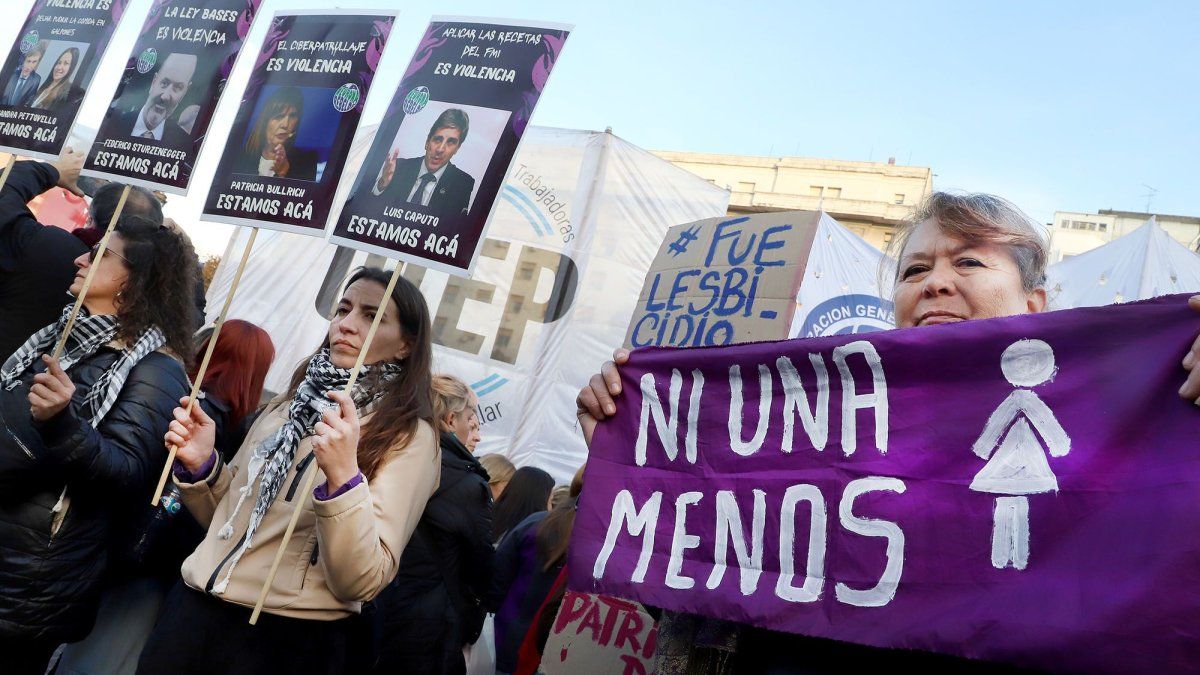On June 3, 2015, the first march of Ni One less was made, to claim for femicides and make visible the multiple forms of gender violence.
Like every morning, Mariana takes the collective in silence. Some brands are not seen, others hide under makeup and coat. He is coming late to work again. In recent months his punctuality became erratic, lacked several times and can barely concentrate on meetings. He still could not name what happens to him, he thinks they are couple problems, but Mariana lives domestic violence. Lucia, her office partner, began to notice changes: she was always very responsible with the schedules, very cheerful. But now it is turned off, you can notice the contained tears. Concerned, she was encouraged to tell Ana her suspicions, both’s friend, looking for what to do. “You saw that also, you always leave, and you no longer keep chatting and it is not a thousand that does not come to the After Office.” But Ana’s answer was blunt: “That is a private issue, we don’t get.”
The content you want to access is exclusive to subscribers.
But domestic violence is not reduced to home: it is a social problem that impacts all spaces where the person develops, including work. Ignoring it will not stop existing, on the contrary, it makes it invisible and thus perpetuates it. From Grow-Gender and work we reflect on some keys to consider.


10 years after a less
Ten years ago, On June 3, 2015, the streets and squares of each town were filled to the shout of Ni Una lessthroughout the country he left to say enough to femicides and the multiple forms of gender violence. But while the movement managed to install the debate on the public agenda, much remains to be done within labor organizations.
The role of organizations is fundamental. The office, the factory, the hospital or any workplace They can be a containment spacea lifeguard or a place of revictimization and silence.
And what can they do? The commitment cannot be limited to communiqués of June 3: it must be expressed in concrete actions, in policies and protocols that accompany those who are going through situations of violence.
Why are protocols necessary?
Having an accompaniment protocol for domestic violence allows you to establish a road map to act when someone is in this situation. It serves to provide containment, articulate protection measures, guarantee temporary labor licenses and adjustments, and to train leaders and teams in detection and accompaniment.
Moreover, a protocol not only protects those who suffer violence, but strengthens the ethical and social commitment of the organization. Prevents prolonged absenteeism, improves work climate and sends a clear message: violence is not tolerated, and accompaniment is key.
Keys for assembling an effective protocol:
- Clear action procedures: Road that must follow the team that addresses a situation and must accompany, with clear and delimited steps.
- Protection measures: Special licenses, shift changes, psychological or legal accompaniment, economic support measures.
- Training to leadershuman resources and teams on how to act with a gender and rights perspective.
- Internal communication: make visible the protocol and its resources at all levels to promote access and trust.
- Articulation with external networks: Connection with public and civil society specialized organizations for integral accompaniment.
Domestic violence is not a private issue, it compromises the health, security and life of people. Ten years after the collective cry of Ni One less, you cannot continue to look the other way: it is time to compromise and act.
Coordinator of the Grow-Gender and Work Violence Area
Source: Ambito
David William is a talented author who has made a name for himself in the world of writing. He is a professional author who writes on a wide range of topics, from general interest to opinion news. David is currently working as a writer at 24 hours worlds where he brings his unique perspective and in-depth research to his articles, making them both informative and engaging.




